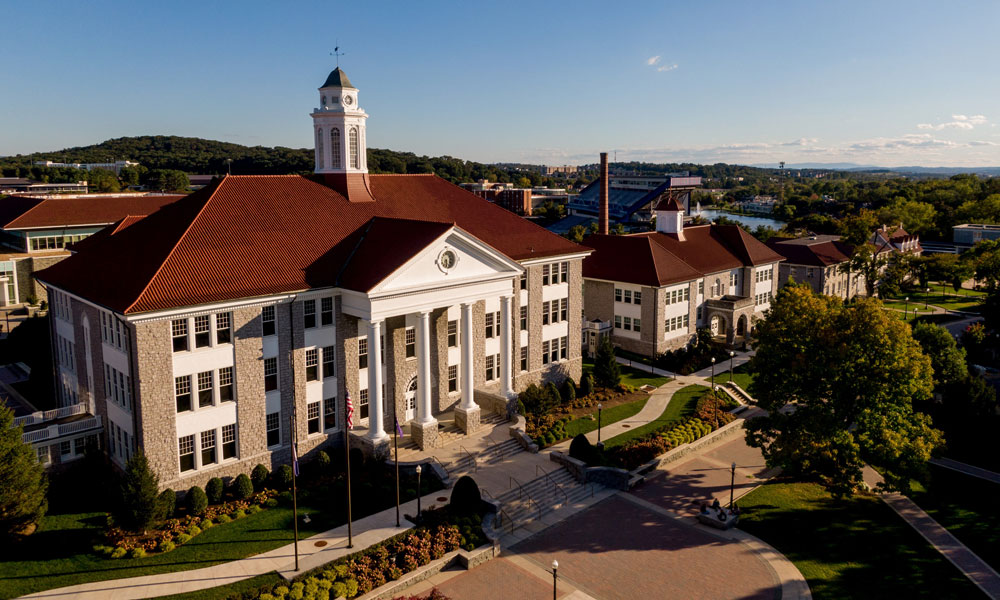Creating an Elementary School Garden
Geography
By: Brett Seekford
The idea for establishing a grade school garden began with Dr. Amy Goodall’s desire to complete an island biogeography study of butterflies in an urban setting. While establishing projects, it became known that “Each Harrisonburg Public School was on board to create a garden,” Goodall said. During fall 2011, Principal Anne Lintner and a second grade teacher, Regina Hissong, from W. H. Keister Elementary School (KES) contacted us to say, “We are ready to do this,” Goodall explained. “We also had interest in creating a vegetable garden for schools by two GS seniors who needed to complete a capstone project as a part of their requirement for graduation. Another student was interested in butterflies so we all worked together to plan a garden that accommodated both vegetables and butterflies,” Goodall added. “It’s very unique [the garden]. There are other public gardens in the city, but they do not have this kind of combination.”
To make this a reality, Goodall, her students, the KES principal and faculty created an assignment for KES students to find out which vegetables they like to eat and which butterfly species they wanted in their garden. In spring 2012, the garden plot was built and planted with flowers, herbs, and vegetables that would engage students and attract those butterflies. Through collaboration among the Principal Anne Lintner, KES faculty, JMU faculty and students, the garden has been a success. The garden continues to be an ongoing project where JMU and KES volunteers work throughout the year to provide upkeep and maintenance.
Goodall explained the continual research to ensure the garden serves its purpose: “Gardens change every year based on the age and expansion of the perennials, reseeding of annuals, differences in weather, and how soils change. We rework parts of the garden each year in response to environmental conditions. We also change things in response to observing what the children like to see in the garden.”
Working on the garden has impacted Geographic Science student volunteers, too. Kyle Schwizer ’13, Geographic Science, found his work at KES to be enlightening. “We would try to do as much as we could, we really wanted this garden to take off and it did. From watering and caring for all the plants to redesigning the beds, adding soil and mulch when needed. We didn’t see it as a chore; it was something we loved to do,” Schwizer stated.
Melanie Freshwater ’15, a current junior at JMU, agrees with Schwizer that the garden provides a gratifying way to spend her time. She elaborated, “It is always rewarding to raise a garden and be able to enjoy the fruits of labor, but even more so, it is great to know that students that have never been exposed to gardening have access to the KES garden, can learn, share, practice and pass on the skills and joys of the garden!”
The garden has become an important feature of KES. Since its implementation, KES teachers have used the garden to teach students important aspects of science, such as irrigation, measurements, and insect identification. Students also spend time in the garden during recess.
“When I am in the garden at the elementary school, the students love to come into the garden with their questions and interesting comments about things like bugs and the shapes of vegetables,” Goodall said. With all of the functions the garden provides, it has become an integral feature to academic and social life at KES.
JMU students have not forgotten their experiences at W. H. Keister either. Despite working in Frederick County now, Schwizer visits Harrisonburg regularly. “It is great to see changes and improvements that are made upon our arrival. I would love to eventually move even closer to Harrisonburg and be a volunteer in the garden,” he said.
Likewise, Freshwater continues to stay updated on the garden’s progress: “Even if I relocate or continue my travels, I will always return to check on the garden and trust that it is in the care of good hands.”
